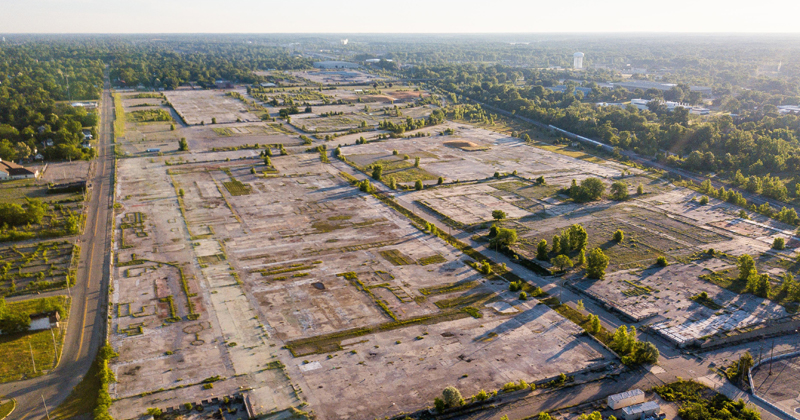
(Above and below: photos of the former Buick City property, one of the largest brownfield sites in Michigan)
Let’s start with a scenario. You own a company, maybe a small manufacturer. Business is good and you’re looking for a place to build new operations. You find the perfect location — plenty of land with access to rail, minutes from an interstate, served by high-capacity water and sewer service, with all the redundant power you could want and a local workforce that knows how to make things.

That all sounds great.
Then you learn it’s a brownfield, and you’re not so sure.
To state the obvious, due diligence always is warranted and decisions about risk are unique to each circumstance. But those who explore brownfields often discover a world of remediation experts and contractors who are skilled at supporting safe redevelopment and reuse and, should they choose, a variety of federal, state and local grants and other incentives tied to environmental outcomes, economic outcomes or both. These incentives are particularly effective at leveraging high-value vertical construction and other taxable improvements.
That’s in addition to the resources and guidance of economic development organizations like the Michigan Economic Development Corp. and the Flint & Genesee Economic Alliance, which understand the economic and social benefits of cleaning up the environment and bringing new jobs and other activity to idled properties.
Cleanup and reuse of brownfield properties is an urgent and growing need in the U.S. The Environmental Protection Agency, which has an office devoted to brownfield redevelopment, estimates there are more than 450,000 brownfield properties in the U.S. These range from abandoned factory sites to corner gas stations and dry cleaners.

Many of the benefits of brownfield redevelopment are clear, which is why programs that support it typically enjoy broad political support: removal of blight. Protection of the environment. New jobs and tax revenue. Not as clear but arguably no less important: preservation of undeveloped green space. Utilization of existing infrastructure. A sense of renewal.

That’s not to minimize the potential challenges. Especially at properties where environmental activities are ongoing, you need an experienced team that can coordinate redevelopment and environmental work to keep both on schedule and ensure there are no obstacles to safe reuse.
The redevelopment and reuse of RACER Trust properties, many sold and redeveloped while cleanup activities were ongoing, is proof of the possibilities. In Flint, we carved out and sold land at the former Buick City auto manufacturing complex to two companies that have returned manufacturing — and hundreds of jobs — to the city. In Livonia, a former factory site is home to 1,100 logistics workers. At Willow Run, companies are testing the technology of the future at the American Center for Mobility. There are others. In total, according to an economic analysis RACER commissioned, our cleanup and property sales over our first 10 years resulted in recurring, annual contributions of nearly 26,500 jobs, $1.9 billion in labor income and $7.3 billion in total output across our portfolio.
In nearly every case, that activity is happening on a former brownfield.
